Weekly Recap
Last week, the S&P 500 and the Dow closed at record highs, boosted by financial stocks after banks reported strong quarterly earnings. Meanwhile, US inflation data last week also helped fuel expectations that the Federal Reserve will cut rates in November.
Chinese stocks saw another volatile week, with the Hang Seng falling 1.5% last week, extending 9.4% losses from the previous week as China stimulus hopes faded.
Over the weekend, the Chinese finance ministry said it would significantly increase the debt to revive its slowing economy but left key details on the size of the support it intended to offer, disappointing the markets ahead of the new week.
Earnings season ramps up
Banks kicked off earnings season on Friday, with JP Morgan and Wells Fargo rising after better-than-expected numbers. This week, earnings ramp up with more banks, such as Goldman Sachs, Citigroup, and Bank of America, updating the market and streaming giant Netflix.
The earnings come as the S&P 500 trades at record highs, meaning investors will want to see the fundamentals that support these elevated valuations. Upbeat earnings could help stocks rise further. The market will be paying close attention to signs that lower interest rates could boost corporate guidance and profits, and optimistic signals from banks and rate-sensitive industries could point to even brighter days ahead for the stock market.
That said, it’s worth remembering that risk remains present. Wall Street’s fear gauge, the VIX, has crept up lately, sitting higher than expected when share prices are so high.
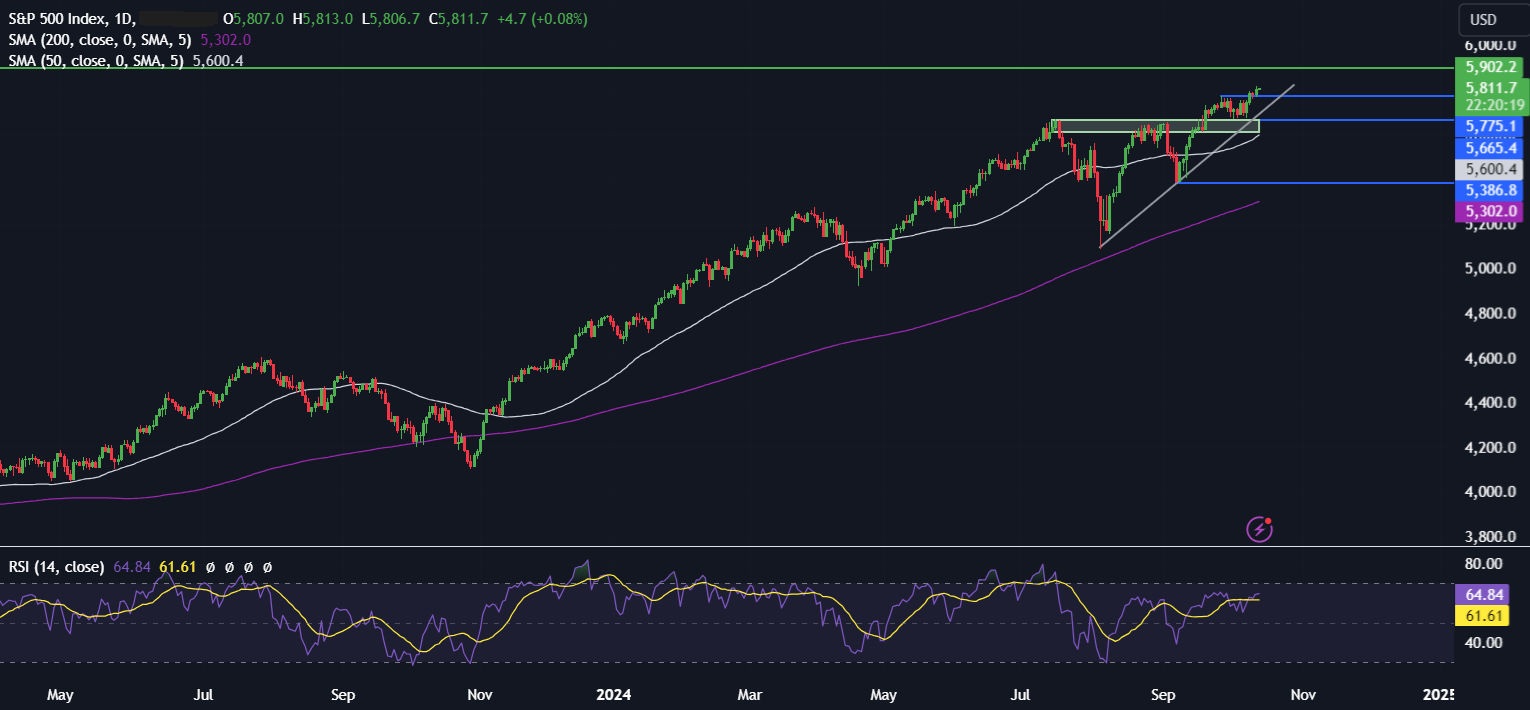
UK Inflation (Wednesday)
UK inflation will be released on Wednesday, and it is expected for inflation to ease to 1.9% year on year, down from 2.2%, with core inflation also seen easing, although to a lesser extent, to 3.5% from 3.6%. Inflation below the 2% target mark after two consecutive readings above could see the market further pricing a rate cut in the November meeting. Markets are currently pricing in an 80% chance for a 25 basis point cut, but. There is still room for dovish repricing, particularly after Bank of England Bailey said the Bank of England could cut rates more aggressively if inflation allows them to do so.
However, a hotter-than-expected inflation report could support the more cautious voices on the MPC and set the markets up for another split vote next month.
Inflation data comes after UK jobs data, which will be released on Tuesday. The data is expected to show that unemployment remains low by historical standards, keeping wage growth elevated. Wage growth is intrinsically linked to service sector inflation, and the signs of this cooling could fuel BoE rate cut expectations.
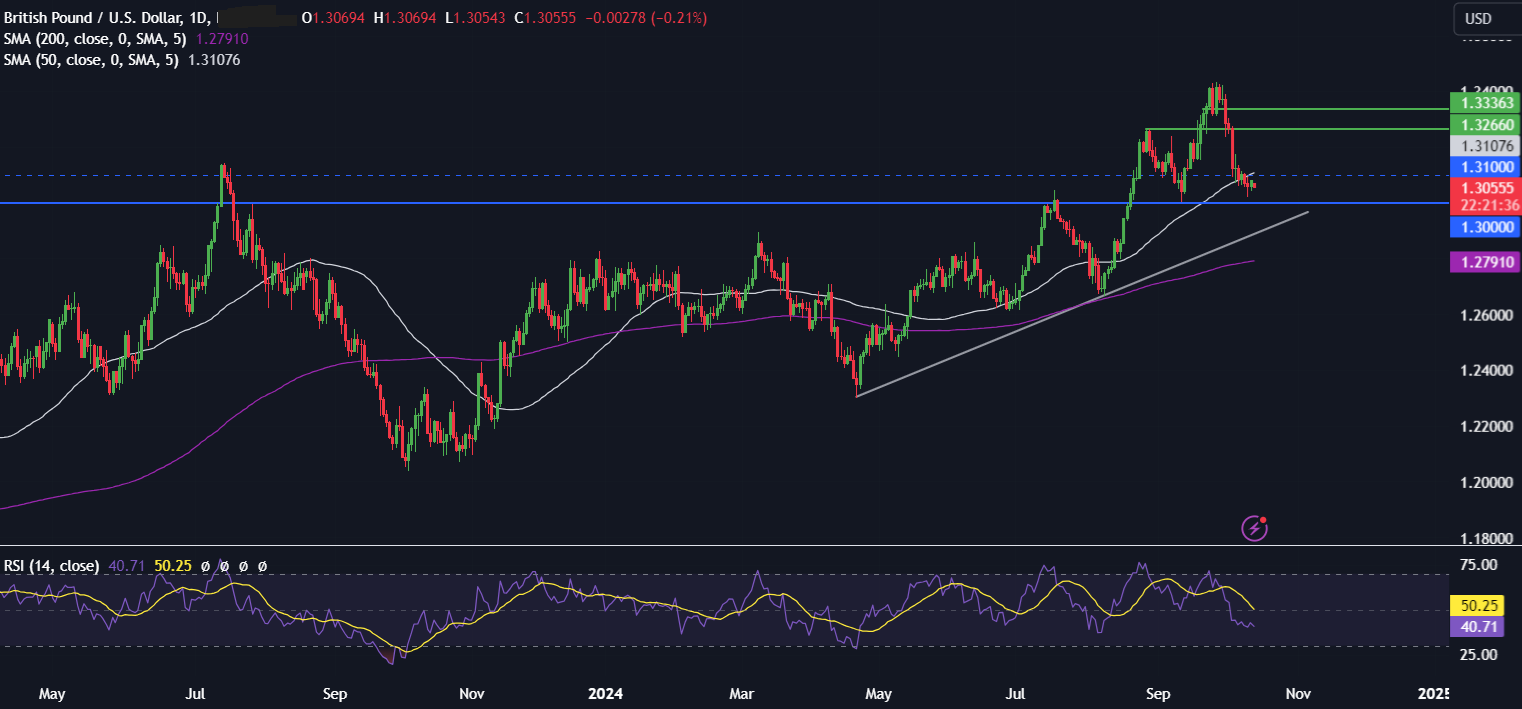
ECB rate decision (Thursday)
The ECB will announce its interest rate decision on October 17th and is expected to cut interest rates by 25 basis points to 3.25%. Several policymakers, including ECB Christine Lagarde, have conveyed this move in recent days and weeks, particularly as inflation is now below the target level.
The meeting comes as eurozone inflation has fallen below the euro’s ECB’s 2% target to 1.8% annually amid rising concerns about the outlook for the eurozone economy. Germany, the eurozone’s largest economy, is expected to contract this year, and the minutes of the September ECB meeting highlight the growing concern among policymakers about the deteriorating economic picture for the region.
90% of economists forecast a 25-basis-point cut this week, marking the third 25-basis-point rate cut since June. A further rate cut is expected in December and could continue reducing rates to 2.5% by mid-2025.
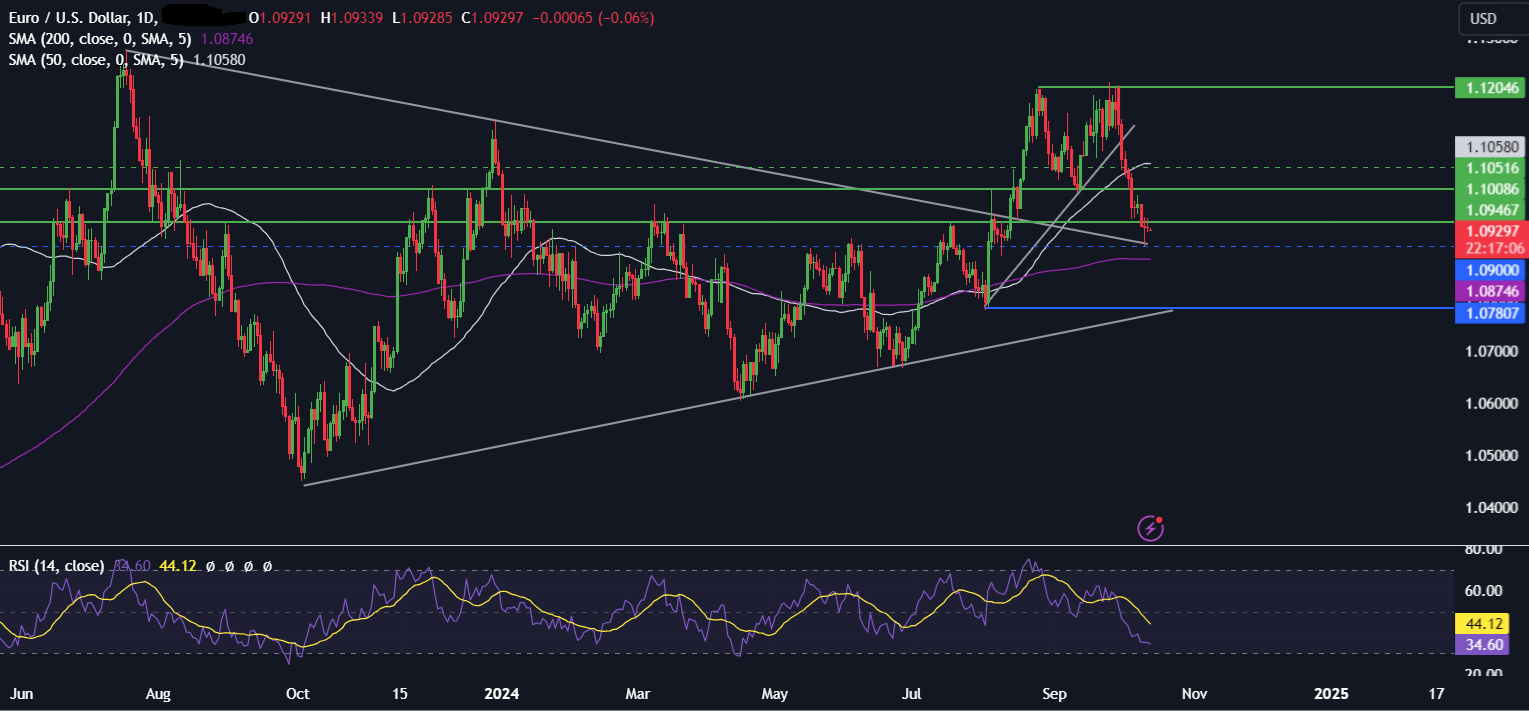
US retail sales (Thursday)
The U.S. economic calendar is relatively quiet this week, with just US retail sales in focus. Expectations are for retail sales to rise 0.3% MoM, up from 0.1% in August. The data comes after U.S. jobs data smashed forecasts, and inflation continues to cool, supporting household consumption. Solid retail sales data would support the view that the U.S. economy continues along a Goldilocks scenario whereby inflation is cooling, and the economy remains resilient. This would support further gains in US stocks.
China data (Friday)
With so much attention on stimulus, Chinese data will play second fiddle. Chinese inflation was released over the weekend and showed inflation cooled by more than expected to just 0.4% YoY. Retail sales, industrial production, and GDP data will be released on Friday.
Q3 GDP is forecast to cool slightly to 4.6% from 4.7% in Q2. The figures come as major investment banks have already revised 2024 growth predictions lower owing to weaker-than-expected industrial output and retail sales. Analysts will closely watch whether recent stimulus from China’s PBOC will have a tangible effect on economic activity in the coming quarter. However, the underwhelming fiscal announcement means there’s some uncertainty over the timing that the policy will be passed into the economy.
Given the disappointment at the weekend surrounding additional Chinese stimulus, weak data could inject further volatility into the market.
The Aussie, which is considered a proxy for China, has fallen for the past two weeks as China stimulus disappointed. Weak data on Friday could see AUD/USD come under further pressure.
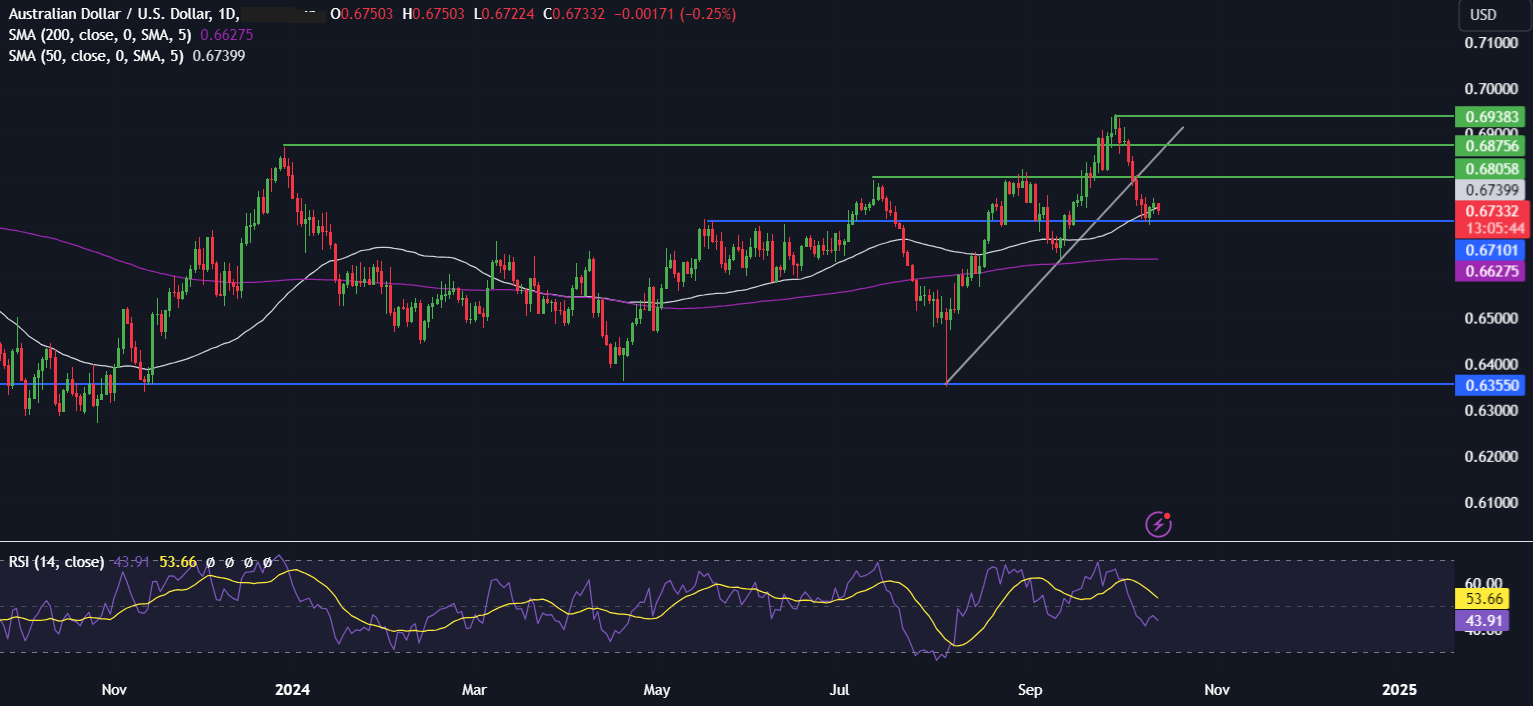
Japan inflation (Friday)
Japanese core inflation data will be in focus and is expected to cool to 2.3% YoY, down from 2.8% in August. Tokyo core CPI, which is often used as a proxy for nationwide inflation, rose to 2% in September, matching the Bank of Japan’s 2% target and expectations, and was down from 2.4% in August. Despite recent cautious remarks from the newly elected PM Ishiba and BoJ governor Ueda, economic data, including wage growth and resilient domestic spending, could be laying the groundwork for a possible rate hike in December or January.
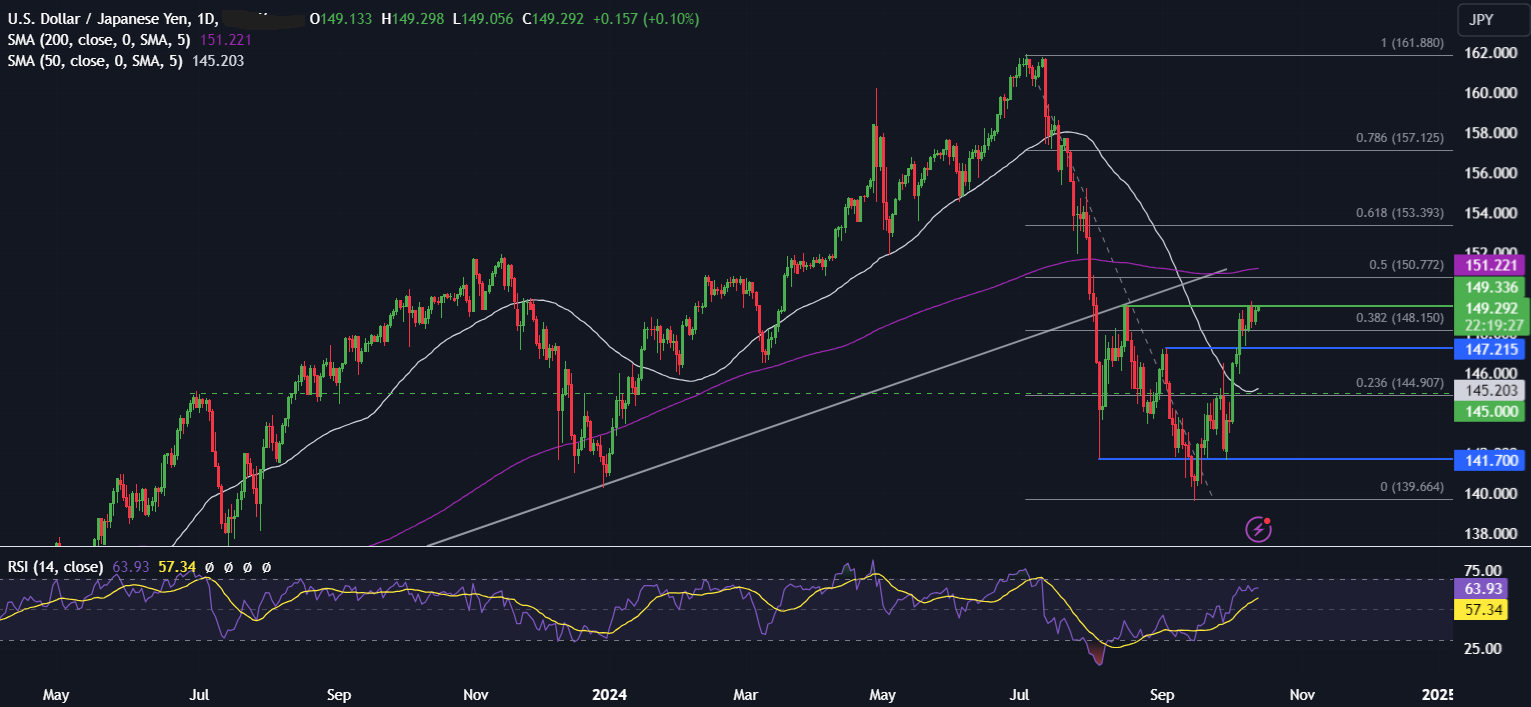
Geopolitical tensions
Geopolitical tensions are likely to remain the key theme heading into the new week with the market continuing to monitor developments in the Middle East and the likelihood of a broadening out of the conflict.
Concerns over tensions in the Middle East have been played out mainly in the oil market. Oil prices rose 10% across the previous two weeks. However, oil is starting this week lower as the market also weighs up, disappointing China’s stimulus.
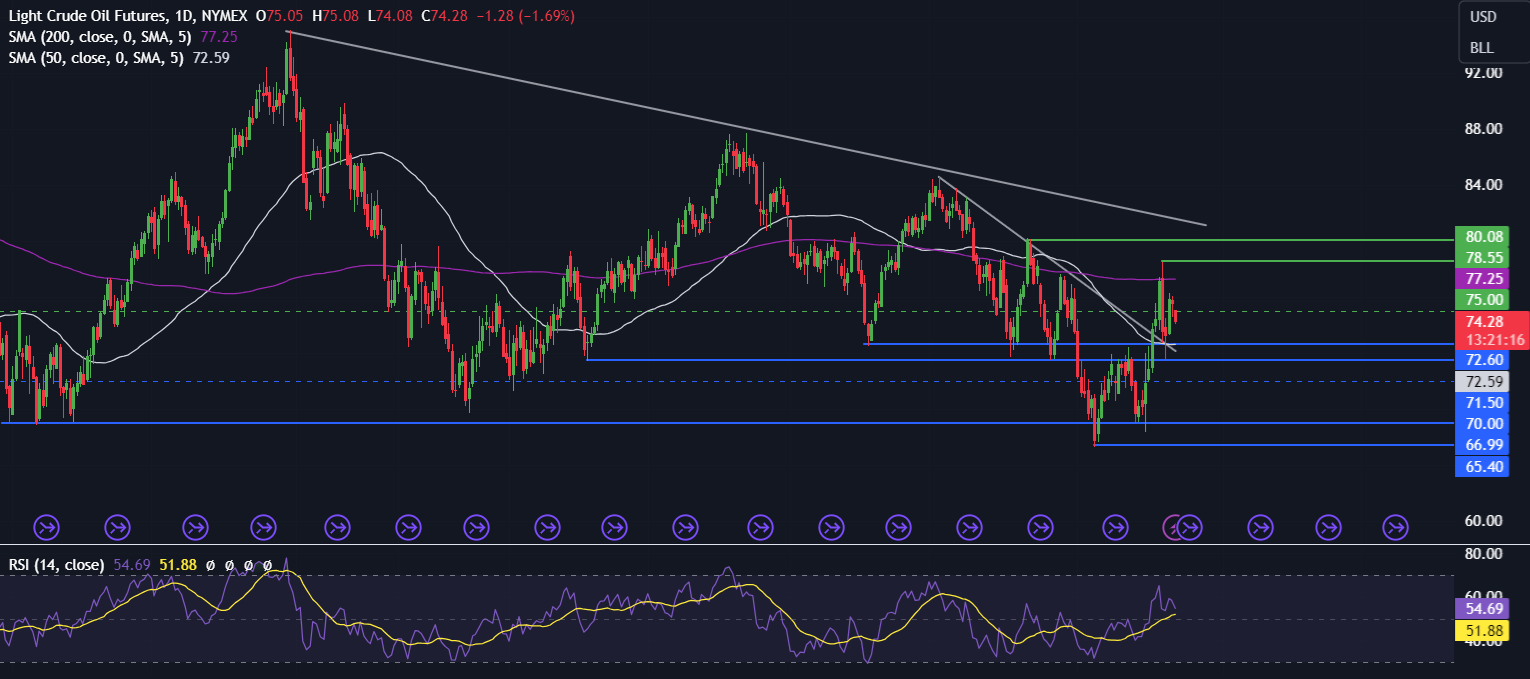
Meanwhile, Gold continues to hover around record highs, boosted by safe-haven demand and expectations that central banks will continue to cut interest rates going into the end of the year.
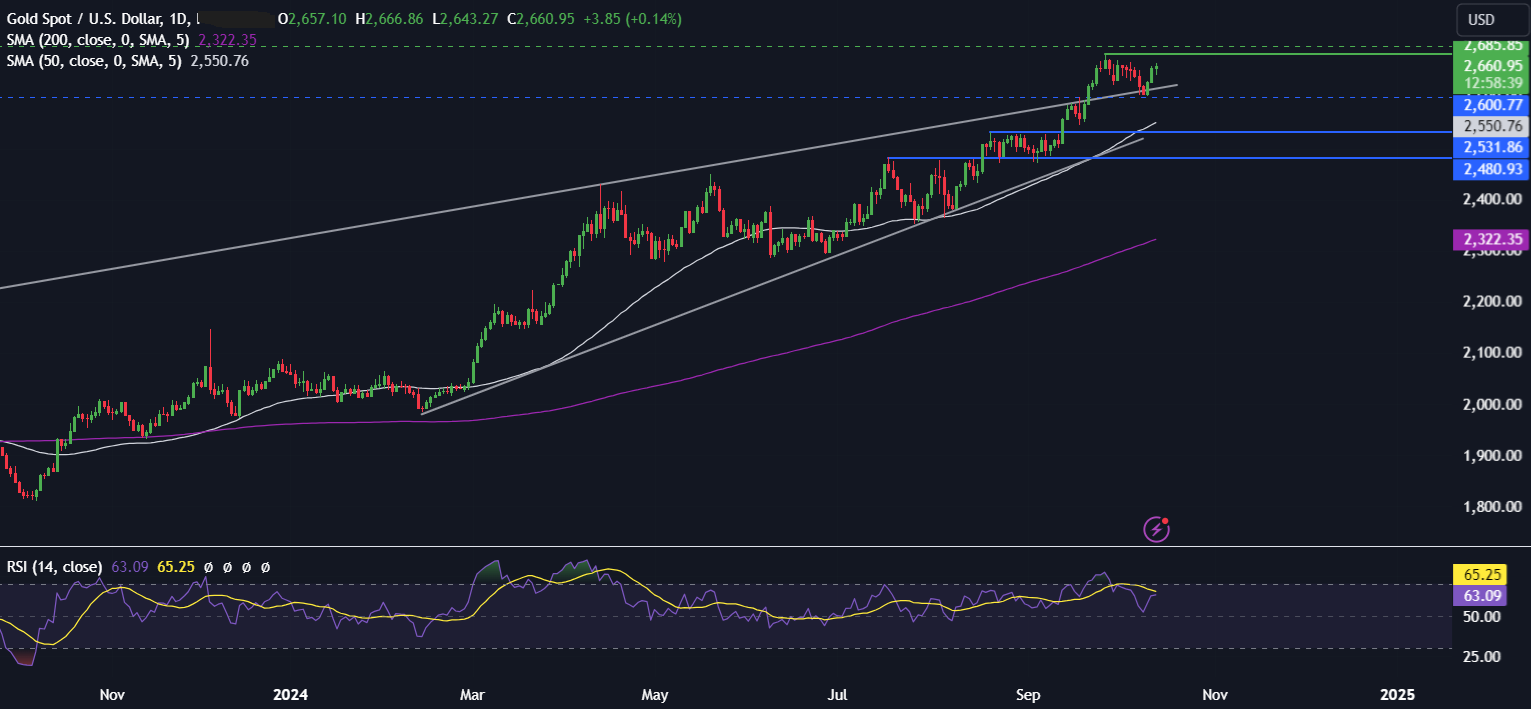
The content provided here is for informational purposes only. It is not intended as personal investment advice and does not constitute a solicitation or invitation to engage in any financial transactions, investments, or related activities. Past performance is not a reliable indicator of future results.
The financial products offered by the Company are complex and come with a high risk of losing money rapidly due to leverage. These products may not be suitable for all investors. Before engaging, you should consider whether you understand how these leveraged products work and whether you can afford the high risk of losing your money.
The Company does not accept clients from the Restricted Jurisdictions as indicated in our website/ T&C. Some services or products may not be available in your jurisdiction.
The applicable legal entity and its respective products and services depend on the client’s country of residence and the entity with which the client has established a contractual relationship during registration.




